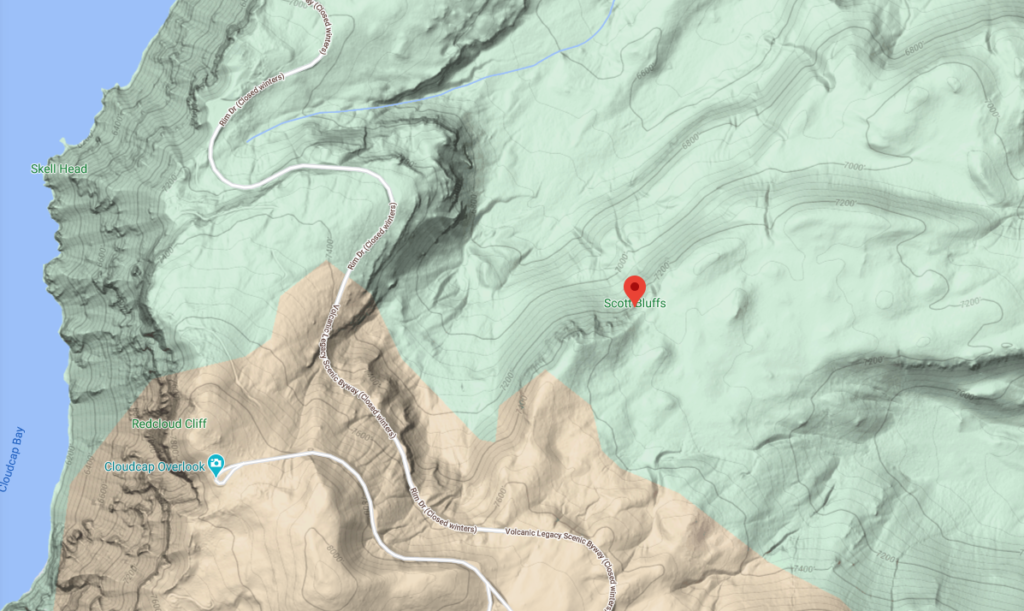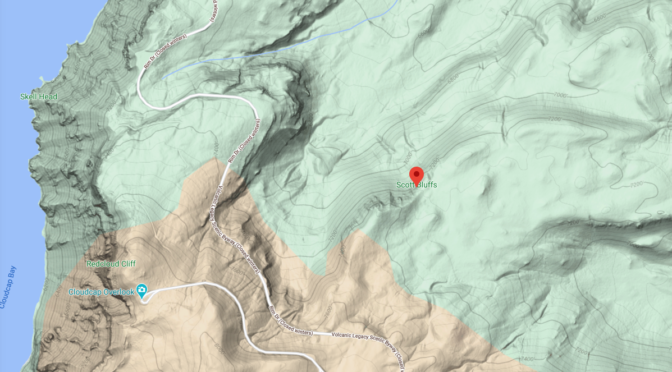The Younger Dacite Flows
Dacites of Cloudcap and ScottBluffs
On the map, plate 3, all the lavas of Cloudcap and Scott Bluffs have been classed as dacite. It must be admitted, however, that some flows in this vicinity may well be andesitic and many more show features intermediate between those of the dacites and the andesites. Few of the rocks of the Crater Lake region are more troublesome to identify. There can be no doubt, however, that the lavas of questionable character terminate close to the park boundary, for to the east the flows are obviously true dacites. If the lavas are rich in colorless glass, contain hornblende, and yet are poor in dark constituents, and if at the same time they show delicate flow banding, they are almost certainly dacites; where, on the other hand, the banding is inconspicuous, the pyroxenes are large and plentiful, and the groundmass is coarsely pilotaxitic, they may be acid andesites. None of them carries porphyritic quartz.
Among the flows which are almost certainly dacitic is the one just inside the rim of the caldera, above Cottage Rock. The base of this sheet passes downward gradually into welded dacite tuff, the presumption being that the lava was erupted immediately after a violent explosive outburst. This flow has a hyalopilitic texture. On an average, phenocrysts of andesine-labradorite constitute approximately 15 per cent of the bulk. Among the dark phenocrysts, which are only about a third as plentiful, augite predominates. Hypersthene comes next. Oxyhornblende is either absent or present only in very minor amount. An interesting feature of all these ferromagnesian minerals is the fact that the unaltered interior of the crystals is commonly enclosed by a zone which is discolored in shades of red and brown, and this in turn is surrounded by a shell composed of opaque ore. These alterations may have been produced by the same hot vapors which gave rise to the abundant spheroids of cristobalite lining some of the vesicles. To these same vapors one may also ascribe the tiny flakes of hematite and brown blotches dispersed in the hyalopilitic groundmass.
Fan-shaped twins of tridymite are invariably present dense, pilotaxitic ”andesitic dacites,” and in some specimens cristobalite may be found on the walls of vesicles. Plentiful and large, stout prisms of hypersthene and augite emphasize the andesitic appearance. Yet in a single exposure, rocks of this kind merge into e more fluidal and glassy dacitic types.



